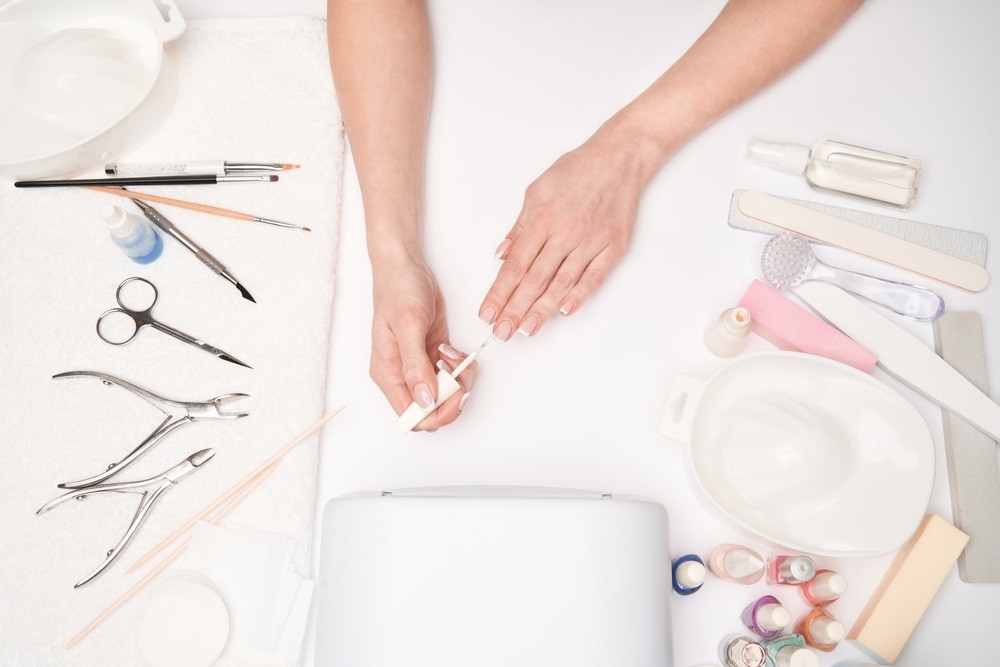Contents

Gel manicures employ high doses of UV radiation to embed a special gel into a person’s nails. Although there is minimal evidence that this might lead to severe illnesses like skin cancer, some studies suggest that pain and nail damage are common adverse effects of a gel manicure.
Manicures are cosmetic procedures used to change the appearance of a person’s nails.
This article defines gel manicures and explores health and safety concerns. It also reviews previous research that compares gel manicures to regular artificial nails. Maby constantly updates new nail salons opening in the city with trending nail designs.
What is a gel manicure?
Gel manicures use a type of light-sensitive gel. This gel acts as nail polish but has unique properties that differentiate it from acrylic nail polishes.
In particular, the gel will only correctly be set upon exposure to specific light sources. For this reason, individuals who want a gel manicure must ask nail technicians to use a particular light or use this light themselves. These lights usually use high-intensity UV radiation.
How long does a gel manicure last?
The most significant advantage of gel manicures is their longevity. “With adequate nail prep and at-home care, such as cuticle oil and hand lotion, gel manicures can last up to two weeks,” explains Duguay-Gordon. However, with care, they can survive up to four weeks.
If you have a series of activities coming up, such as prom, internship interviews, and family vacations, gels can be the ideal option.
How much is a gel manicure?
The cost of a gel manicure is determined by where you reside and your look. Basic one-color gel manis, according to Duguay-Gordon, cost about $35 to $40. However, if you want crazy celeb-level nail art, it may cost up to $100 or more — and that doesn’t include the 20% tip.
Are gel manicures worth it?
The gel is worth the expenditure if you regularly get traditional manis or have a significant spring break vacation that you want chip-free color. They are only $10 to $15 more expensive than a typical manicure. However, you could choose press-on nails or a conventional manicure if it’s just for one night or you’re on a tight budget.
Do gel manis damage your nails?
They may need to be done correctly! According to Duguay-Gordon, “Gel manicures are not bad for your nails when done professionally.” However, if the nails are not adequately prepared, applied, and removed, they could be harmful. It’s a frequent misperception that gel manicures injure your nails; the most damaging aspect is usually removal.
If you get your nails done at a salon, be sure your nail technician isn’t buffing, filing, or using a drill to remove the polish. Avoid taking the gel off yourself (we know it’s tempting). This could seriously harm your nail beds.
Many worries that receiving gels will prevent their nails from being able to “breathe,” but Duguay-Gordon assures us that since nails are already dead, they cannot “breathe.” Although the entire notion is untrue, it is adorable to picture your tiny nails as having small noses.
Are uv ights dangerous?
The main complaint against gel manicures is that the UV lights used to set the gel polish might hasten the aging process and increase your risk of skin cancer. This is accurate. “According to a manicurist, the ultraviolet light emitted by these dryers is significantly greater than the ultraviolet light you would receive from exposure to the sun. UVA light is what causes skin aging and the growth of skin malignancies. Apply sunscreen to your hands before getting a gel manicure to protect them from the sun.
How do you safely remove a gel mani?
The most crucial parts are your nail beds and cuticles; they are formed of live tissue. Therefore you must be cautious when applying and removing polish. Please don’t STEAL from them. Gels can be safely removed at a salon (for an average cost of $10–$20) or at home using acetone, tin foil, cotton balls, and a nail file.
If you visit a salon, ensure the professional gently removes your gels. “Nobody should be forcefully scraping your nail bed. The item ought to simply fall off, “quoting Miss Pop.
Just be extra cautious if you want to save money and a trip to the salon. The following is how Duguay-Gordon advises carefully removing your gels at home:
Get a glass bowl and a bottle of 100% acetone.
- A light-grit file can be used to crack the top coat’s seal.
- The nails should be acetone-soaked for around three minutes.
- Use a cuticle pusher made of a wood stick to scrape the jelly-like substance gently.
- Buff the nails carefully after everything has been taken off.
- Use cuticle oil and hand and nail cream to moisturize.
Tips for healthy nails
Dermatologists advise the following measures to maintain healthy nails before, during, and after gel manicures:
- Be proactive with your manicurist: Check whether the person is cleaning and sanitizing the equipment after each customer and inquire whether the tools are sterilized. Additionally, avoid having your cuticle pushed or cut by a manicurist because doing so could cause infection and inflammation.
- Consider using regular nail polish instead than gel polish: This is crucial if you frequently have nail issues or have an acetone allergy because acetone is needed to remove gel polish.
- Put on sunblock: Apply a broad-spectrum, water-resistant sunscreen with an SPF of 30 or higher on your hands before obtaining a gel manicure to stave off skin cancer and early aging. By doing this, you’ll be able to shield your skin from the UV rays needed to bond gel nail polish to the nail. Another choice is to put on dark, opaque gloves and have the fingertips cut off before painting your nails.
- Avoid choosing gel nail paint: Avoid picking at the polish or attempting to remove it with other nails or tools when the color starts to fade. Instead, schedule a removal appointment with your nail technician.
- Acetone is only used to soak your fingertips: When removing nail paint, just dip your fingertips in acetone to protect the surrounding skin. Do not submerge your hands or fingers. Cotton balls can also be used to take the polish off. Apply the cotton balls to your nails after soaking them in acetone. To do this, wrap your fingertips in tiny pieces of aluminum foil. This will guarantee that the acetone only comes into touch with your nails. It should be easy to remove the nail paint after around 15 minutes.
The benefits of getting a gel manicure
Without question, having clean, well-kept nails is essential; after all, one of the first things people notice about you is your hands. Additionally, you want the polish to last if you get one with your manicure to give your look a splash of color. That’s one of the many benefits of choosing gel manicures and pedicures instead of your standard manicure routine.
Long-lasting. Although acrylic polish is viable, gel manicures and pedicures last longer. This is so that the solid shell that results from gel manicures and pedicures, which require a curing process with a special UV or LED light, can persist for weeks.
Your nails are further protected by it. The hard shell that forms during the curing process shields your natural nails from damaging environmental toxins and pollutants. Also, gel manicures are ideal if your nails break easily because the hard outer layer prevents breakage and chipping between manicures.
Very quickly dries. We’ve all had that horrible experience where we accidentally bump something with our hands while wearing wet nail paint. Nobody wants to damage swiftly a perfectly manicured hand like that. To give you perfectly manicured nails so you can go on with your busy day, gel manicures and pedicures use a unique curing light to dry and firm the color in only one minute.
Natural-looking and feeling nails Despite being robust and long-lasting, your gel manicure and pedicure will appear and feel just like your natural nails.
Regular manicures and pedicures are necessary to maintain healthy skin and nails in addition to good looks:
- Improved circulation. The least probable area of our body to have healthy blood circulation is our extremities, which include our hands and feet. Circulation is crucial for the health of skin, nails, and other body tissues because it carries nutrients and oxygen to our cells. The massage is a vital component of every manicure and pedicure, absorbing lotions, oils, and serums and maintaining healthy blood circulation.
- Lower infection rates. A fungal infection in your nails might be challenging to detect until it is too late, especially on your toes, where the climate can be humid and warm.
- Softer skin. We all need to pay a little more care to the skin on our hands and feet, and our nail technicians can apply unique treatments that nourish, protect, and leave your skin silky and soft by having frequent manicures and pedicures.
- Time to de-stress. Everyone has a busy life, and sometimes we must slow down and enjoy some “me time.” Scheduling regular manicures and pedicures allow you to relax and get pampered. You emerge from the salon feeling refreshed as well as looking beautiful.
